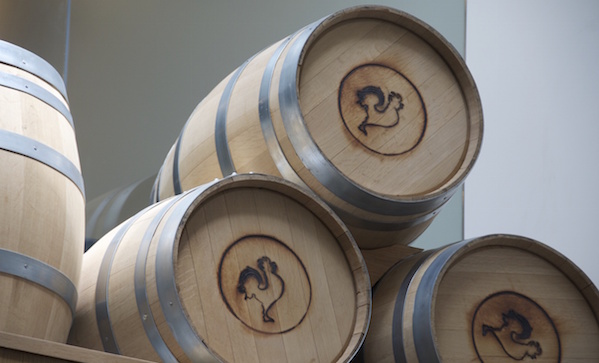You’ve probably heard the broad strokes of this story repeated ad nauseum. Back in the early eighties, beer in North America sucked. Gently flavoured fizzy water, to put it generously. A bunch of forward-thinkers wondered why this was the case and founded breweries—Sierra Nevada in California, the Boston Beer Company on the East Coast, and in Alberta, Big Rock Brewery.
Big Rock began life as the retirement project of Ed McNally in 1985. McNally, then sixty, did two things in his life that led him to brewing: he was a lawyer and a farmer. The lawyer in him travelled the world and got to try all kinds of amazing European beers, and the farmer in him came back to Canada and wondered why the hell Canadian brewers imported grain when Canadian farmers were growing some of the best grain in the world. Hence, Big Rock.
For a long time, craft brewing was dominated by breweries like Big Rock—they started early, they weathered the microbrew bust of the 90s, and they had the loyalty of the first craft beer fans. Back then, Grasshopper was one of the only wheat beers around—of course it was revelatory.
The explosion of craft brewing in the past ten years changed things. New breweries were experimenting with new hops, pushing up the alcohol content, aging beer in whisky barrels, resurrecting old styles, inventing new styles—and poor Big Rock still had the same line-up of about eight beers, with the occasional special edition stout in the winter. Then, one disappointing summer, they released a lime-flavoured beer in the wake of more commercial players. It seemed like the beginning of a long, slow decline.
Something cracked at Big Rock around 2012. They picked up a new CEO, the direction of the company was chosen by bolder heads, and brewmaster Paul Gautreau was given marching orders: innovate.
Over the past two years, Gautreau responded with dozens of new beers. Weizen, pilz, braggot, fruit beer, kölsch, kvass—Big Rock has brought out new beers at a furious pace, keeping things seasonal and keeping drinkers on their toes by dropping slightly older brews as new ones stepped into the fold (side note to Big Rock: know what was great? That lumberjack pack. And Black Amber Ale). Visit the brewery (and you should), and you’ll see a massive collection of hops, the beginnings of an apiary (they’re thinking of an estate beer), a barrel collection, and next to all the brewing equipment that can turn out 200 hectolitre batches, a smaller Kaspar Schultz for cooking up new ideas. Then you can finish off the in tasting room—I recommend a glass of unfiltered Grasshopper, because it’ll be the best Grasshopper you ever try.
Sadly, Ed McNally, the energetic founder of Big Rock, passed away in August. Back when I was a mere high school liquor store employee (it’s been a logical career progression), Ed used to pop by now and again, buy a six-pack, and crack the occasional dirty joke. I think he just liked visiting liquor stores, since I’m assuming he could get whatever beer he wanted at the brewery. He’s also the only guy I know who liked to take twenty minutes to buy a six-pack, owing to his propensity to talk shop with anyone who’d partake. Basically, he was a funny, interesting guy who turned a post-retirement desire for drinking something worthwhile into a thriving beer legacy. If only the rest of us should be so lucky—thanks, Ed.
Dave Robson is the editor of DailyXY. He spends his time reading books, drinking Scotch, and smoking cigars.
Photo Credit: Ran della Stua.


